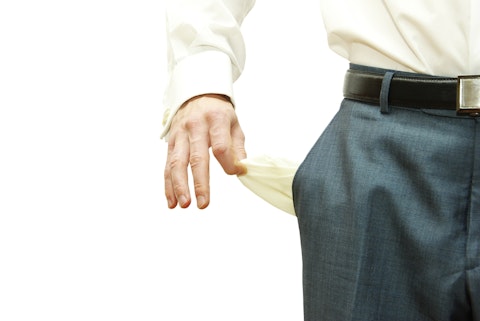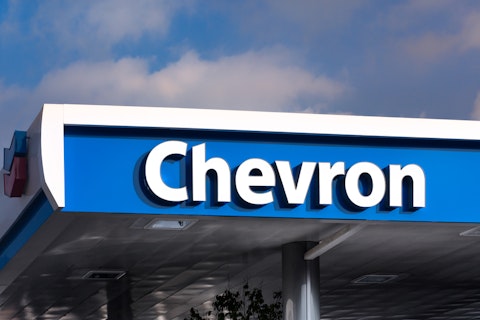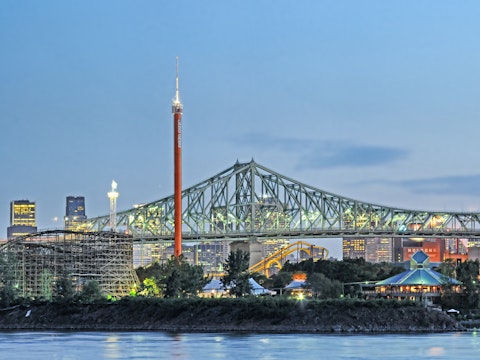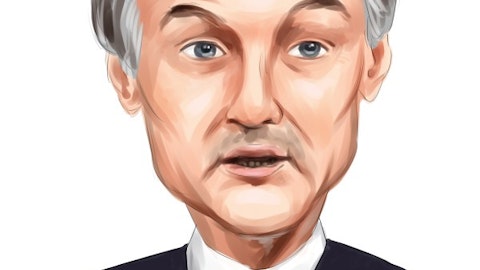In this article we are going to list the 10 Bankrupt Companies That Came Back. Click to skip ahead and jump to the 5 Bankrupt Companies That Came Back.
Companies exist for mainly one purpose only; to earn money, increase profits and provide excellent returns to investors and shareholders. Sure, nowadays the definition of a successful company may not be that simple, with criteria such as sustainability and corporate social responsibility now also representing key performance indicators on which the success of a company is based on, but at the end of the day, if the company isn’t profitable, then it can’t really be considered to be successful.
Now, depending on the size of the companies, they may have reserves that enables them to continue taking losses year after year, as they grow their market share and increase their customer base. Probably the most famous example of this would be Amazon.com, Inc. (NASDAQ:AMZN). The tech behemoth has been one of the top eCommerce players for years, but only recently has started showing profits in its income statements. However, this was obviously not because of poor management, but quite on the contrary. Amazon.com, Inc. (NASDAQ:AMZN)’s position allowed the company to not be profitable. Instead, Amazon.com, Inc. (NASDAQ:AMZN) reinvested its revenue into expanding its business and conquering other areas, such as becoming one of the biggest cloud computing companies.

Pakhnyushchy/Shutterstock.com
Of course, other companies generally don’t have the reserves to continuously make losses and if the company isn’t profitable, then it runs the risk of having to declare bankruptcy. Depending on the company, quite often, the result of bankruptcy is simply that the assets are sold of by the liquidator as the company ceases to exist. Now, remember that there is a strong difference between being a loss-making company and a company which has declared bankruptcy. The former means that the company is still going on as is, while the latter marks the fact that the company is no longer viable in the current structure.
For example, a couple of decades ago, Apple Inc (NASDAQ:AAPL) was believed to be near its death, with huge losses and no viable product to put it back on track. This all started with the ousting of Steve Jobs, who founded the company. With Jobs gone, Apple Inc (NASDAQ:AAPL) lacked innovation and had piling debt that amounted to nearly $1.0 billion. At some point the company was considered to be 90 days away from bankruptcy. However, things took a turn for the better once Apple Inc (NASDAQ:AAPL) acquired Next, another company founded and led by Steve Jobs. The acquisition meant that Steve Jobs would be returning to Apple Inc. (NASDAQ:AAPL) and he helped put the company back on track by releasing the renowned iMac G3 and later the iPod. Now Apple is worth more than $2.0 trillion and it was the first publicly-traded company to cross the $1.0 trillion threshold.
However, filing for bankruptcy does not necessarily mean the end of the business. While we of course have some examples including Lehman Brothers, Enron and WorldCom, some of the biggest companies of their time who were unable to recover and ceased operations after filing bankruptcy, we also have many cases of bankrupt companies that came back.
There might be many reasons why a company has to file for bankruptcy; if they are internal performance related reasons such as inability to lower costs resulting in losses, or even fraudulent activities, then it is unlikely that a company can recover. However, if it relates to external factors such as a recession, then there is still a chance that the company can recover and transform.
Having lived through 2020, it is hard to put a figure on how many companies and businesses have have to declare bankruptcy. Due to global lockdowns and additional rules and regulations because of the Covid-19 pandemic, many major businesses have had to declare bankruptcy. This mostly includes small and medium-sized enterprises, as major corporations either have enough reserves to fund themselves through this tough situation, or the government bailed them out. Probably one of the best examples of a company bailout by the government as well as one of the bankrupt companies that came back is General Motors Company (NYSE:GM). After General Motors Company (NYSE:GM) declared bankruptcy, the US government spent nearly $50 billion rescuing it. As a result, the government got a 61% stake in General Motors Company (NYSE:GM), which had been gradually sold by 2013.
As a matter of fact, some companies are now deemed by analysts as too big to fail, a term which is often used for major financial institutions and was introduced after the 2008 financial crisis, where the federal government bailed them out through hundreds of billions of dollars. But even now, despite vaccines being implemented globally to the general population, there is a lot of uncertainty regarding the future of businesses and sadly, it does seem likely that there will be many more bankruptcies in 2021. But till then, let’s take a look at our list of bankrupt companies that came back, starting with number 10:
10. Sbarro
The American pizzeria chain has 600 locations in 33 countries across the world, and filed for bankruptcy, twice, once in 2011 and once in 2014. However, the company did emerge successfully from both bankruptcies, even though the latter one led to the closure of around 182 locations amid the reorganization of the country.

Pixabay/Public Domain
9. Texaco
Texaco, which currently is part of Chevron Corporation (NYSE:CVX), filed for bankruptcy in 1987. Texaco’s fall wasn’t due to a failing business, but a lawsuit. It entered into a contract to buy Getty Oil, which had also entered into a similar deal with Pennzoil. This resulted in Pennzoil winning a $10 billion award for damages, the largest civil verdict in the history of the US. Texaco had to file for bankruptcy as a result. This was the biggest bankruptcy for the following 14 years. Nevertheless, Texaco thrived on and in 2000 it was acquired by Chevron Corporation (NYSE:CVX) one of the biggest oil refining companies in the world. The combination made Chevron Corporation (NYSE:CVX) the second-largest oil company in the US and and the fourth-largest publicly-traded company in the world.

Ken Wolter / Shutterstock.com
8. Hostess Brands Inc (NASDAQ:TWNK)
Next on our list of bankrupt companies that came back is Hostess Brands Inc (NASDAQ:TWNK), although its comeback is a bit tricky. Hostess Brands was famous for various products such as Twinkies, and CupCakes, in addition to Voortman Cookies, However, in 2012, it had to file for bankruptcy and sell off its assets to New HB Acquisition, a company created specifically for this purpose by Apollo Global Management and C. Dean Metropoulos and Company. The deal resulted in two companies. New HB Acquisition became Hostess Brands Inc (NASDAQ:TWNK) going public in 2016. However, there is also Old HB, Inc. which is the now-defunct company that kept the assets and brands that were not included in the deal with Apollo and Metropoulos and sold them separately to other bidders. So, even though Hostess Brands as a company went bankrupt a new company with the same name and making the same products emerged in its place.

7. Six Flags Entertainment Corp (NYSE:SIX)
If you live in the United States, Canada or Mexico and you love theme parks, you must have visited one of Six Flags Entertainment Corp (NYSE:SIX)‘s locations. In 2019 alone, 32.8 million people visited Six Flags, and has 26 properties, more than any other company. However, in 2008, Six Flags Entertainment Corp (NYSE:SIX) was under crippling debt while consumers were conscious of their spending as financial crisis loomed. Six Flags Entertainment Corp (NYSE:SIX) ended up filing for a Chapter 11 bankruptcy after its stock was delisted by the New York Stock Exchange. The company emerged from the bankruptcy after a reorganization in 2010 and reenlisted its shares on the stock exchange.

WayneDuguay/Shutterstock.com
6. Converse (owned by Nike Inc (NYSE:NKE))
On the sixth spot among bankrupt companies that came back is Converse. The American shoe company was one of the biggest brands in the industry through most of the 20th century and even was subject of an antitrust lawsuit. However, as new competitors such as Nike Inc (NYSE:NKE), Adidas and Puma started challenging Converse’s dominance, and in 2001, the company filed for bankruptcy. The brand was later by Nike Inc (NYSE:NKE) in 2003 for just $309 million. Converse continues to operate to this day, although as a subsidiary of Nike Inc (NYSE:NKE).
Please continue to see the 5 companies that came back from bankruptcy.
Suggested articles:




